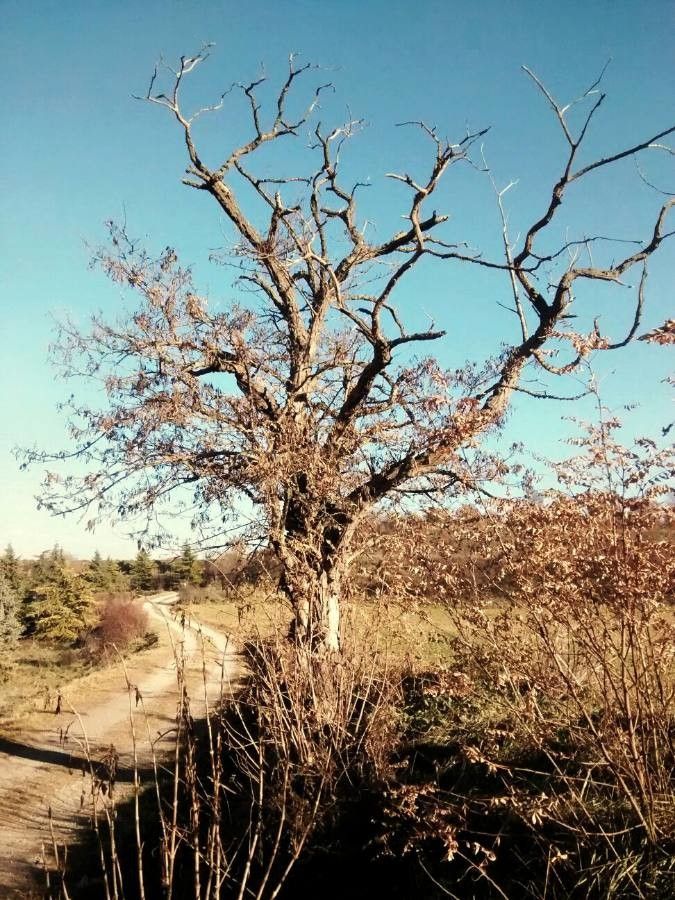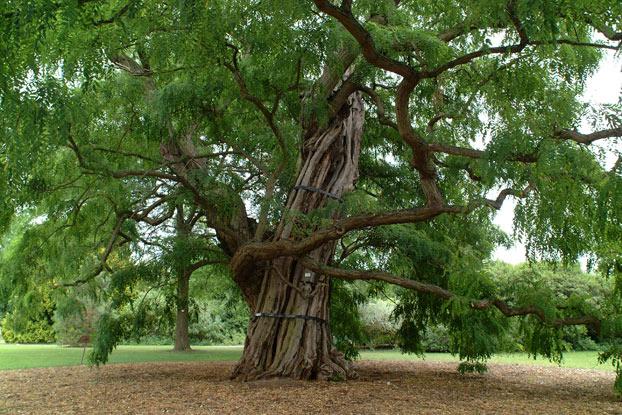Black Locust
robinia pseudoacacia
Also known as: ["False Acacia","Yellow Locust"]
Overview
A deciduous tree native to the eastern United States, known for its hard, durable wood and fragrant, white, pea-like flowers.
Benefits & Perks
["fragrant flowers","wildlife attractant (bees, butterflies, birds)","drought tolerant"]
Botanical Classification
| Phylum: | Magnoliophyta |
| Class: | Magnoliopsida |
| Order: | Fabales |
| Family: | Fabaceae |
| Genus: | Robinia |
| Botanical Name: | Robinia pseudoacacia |
Plant Characteristics
Basic Information
- Category: Trees
- Suitable Location: outdoor garden in open spaces with ample room for growth
- Suitable For:
- Is Weed: No
- Allergenicity: moderate
Environmental Needs
- Climate: {"temperatureRange":"–30–40°C"}
- Hardiness: {"zones":"4–8"}
- Misting: rarely required
- Drainage: Moderate to fast-draining; avoid waterlogged conditions.
- Soil Type: Tolerant of various soils but prefers well-draining loam with organic matter.
Maintenance Level
- Maintenance Level: moderate
- Toughness Level: high
- Pruning Frequency: Annually in late winter or early spring before new growth begins.
- Pruning Intensity: Moderate to heavy; can be pruned to maintain size or improve structure.
Care Details
Ideal Sunlight Coverage:
Full sun (6–8 hours of direct sunlight daily); tolerates partial shade but may produce fewer flowers.
Sunlight Tolerance Tips:
Acclimate new plants to full sun gradually over 1–2 weeks; protect from intense midday sun in hot climates; ensure adequate spacing for light penetration.
Care Requirements
Care Difficulty
moderatemoderate
Sunlight
full sun
Full sun is ideal; avoid deep shade; rotate container plants for even growth.
Watering
every 7–10 days during active growth, less frequently in winter
Water thoroughly until runoff, allow soil to dry between waterings, avoid overwatering to prevent root rot.
Soil
well-drained, loamy soil with moderate fertility
pH: Adaptable pH range (6.0–7.5); slightly acidic to neutral is ideal.
Ensure good drainage; amend with organic matter for poor soils; avoid compacted soil.
Temperature
Hardy in USDA zones 4–8; tolerates cold winters down to -30°F (-34°C); prefers moderate temperatures in summer (60–80°F / 15–27°C).
Protect from harsh winds; water deeply before frost; avoid planting in frost pockets.
Fertilizing
annually in early spring with a balanced slow-release fertilizer
Fertilize only if growth is poor; avoid late-season feeding to prevent frost damage; water well after application.
Propagation
Methods
Softwood cuttings in summer or seed propagation in autumn.
Step-by-Step Propagation Guide
- Take 4–6 inch cuttings.
- Remove lower leaves.
- Dip in rooting hormone.
- Plant in medium.
- Maintain humidity.
- Or sow seeds in containers after cold stratification.
Best Time: Late spring to early summer for cuttings; autumn for seeds after pods mature.
Environment
Warm (70–75°F / 21–24°C), high humidity (70–80%), partial shade for cuttings; bright light for seedlings.
Medium
Well-draining potting mix with perlite or sand; peat moss for seed germination.
Hormone
Rooting hormone is beneficial for cuttings but not essential for seeds.
Timeline
Cuttings root in 4–8 weeks; seeds germinate in 2–4 weeks with stratification.
Tools Needed
Pruning shears, rooting hormone, pots, misting spray bottle, heating mat.
Quick Tips
Use fresh seeds for better germination; keep cuttings moist but not waterlogged; provide bottom heat for faster rooting.
Pruning & Repotting
Pruning Guide
Method
Thinning cuts to remove entire branches back to the trunk; heading cuts to shorten branches for shaping.
Pruning Plan
Shape the tree, remove dead or crossing branches, and encourage airflow to reduce disease risk.
Tools
Pruning saw, loppers, hand pruners, gloves, disinfectant.
Checklist
Disinfect tools; prune during dormancy; remove dead/diseased wood first; make clean cuts just above buds or branches.
Repotting Guide
Best Season
Early spring before active growth starts.
Pot Size
Increase pot size by 2–3 inches in diameter for container plants.
Method
Remove plant gently; trim any circling roots; replace with fresh, well-draining soil; ensure pot has drainage holes.
Suggestions
Not typically needed for outdoor trees; container-grown plants should be repotted every 2–3 years to refresh soil and check root health.
Checklist
Check root bound status; trim roots if necessary; use fresh soil mix; water thoroughly after repotting.
Advanced Care Tips
Watering Mastery
Watering Checklist
Check soil moisture before watering; water deeply; ensure drainage; adjust frequency by season.
How to Apply Water Properly
Water at the base of the plant, ensuring moisture reaches the root zone; water early in the morning to minimize evaporation and fungal growth; ensure proper drainage to prevent waterlogging.
Watering Schedule Tips
Water deeply once a week during the growing season; reduce frequency in winter to monthly or as needed based on soil dryness.
Soil Improvement
Add compost or aged manure for fertility; incorporate sand or perlite for drainage in heavy soils.
Temperature Stress Management
Signs of Temperature Issues
Leaf scorch in excessive heat; dieback in prolonged cold without protection; reduced flowering in suboptimal conditions.
Cold Stress
Leaves may drop or turn yellow; branches can become brittle and prone to breakage; root growth may slow or stop.
Solution: Mulch heavily around the base in winter; protect young or container-grown plants with burlap screens; avoid planting in exposed, windy sites.
Hot Stress
Wilting, leaf scorch, or premature leaf drop; reduced vigor and flowering; increased susceptibility to pests.
Solution: Provide supplemental water during drought; use shade cloth in extreme heat; apply mulch to retain soil moisture.
Fertilizing Guide
Fertilizing Checklist
Check soil fertility; apply sparingly; water after fertilizing; monitor for signs of over-fertilization.
Fertilizing Method
Use a balanced, slow-release fertilizer in early spring; avoid high-nitrogen formulas to prevent excessive foliage growth at the expense of flowers.
Common Problems & Solutions
Toxicity Warning
Cats
ToxicCats are also at risk from the toxic compounds in Robinia pseudoacacia. The plant's lectins can cause significant gastrointestinal distress and may lead to more severe systemic effects in cats due to their smaller size and sensitivity.
⚠️ Symptoms:
🌿 Toxic Parts:
⚡ Toxic If:
if eaten
Dogs
ToxicDogs are susceptible to the toxic compounds in Robinia pseudoacacia, particularly the lectins found in seeds and pods. Ingestion can lead to severe gastrointestinal upset and potential neurological effects, depending on the amount consumed.
⚠️ Symptoms:
🌿 Toxic Parts:
⚡ Toxic If:
if eaten
Humans
ToxicRobinia pseudoacacia contains lectins and other compounds that can cause gastrointestinal distress and neurological symptoms upon ingestion. The plant's lectins interfere with nutrient absorption and can lead to systemic effects if consumed in significant quantities.
⚠️ Symptoms:
🌿 Toxic Parts:
⚡ Toxic If:
if eaten
Frequently Asked Questions
Q: Is Robinia pseudoacacia toxic to humans?
A: Yes, all parts of the plant are toxic if ingested, containing rotenone and other compounds.
Q: Does Black Locust attract wildlife?
A: Yes, its fragrant flowers attract bees, butterflies, and birds.
Q: Is Black Locust suitable for drought conditions?
A: Yes, it is highly drought tolerant once established.
Quick Reference
| Family: | Fabaceae |
| Care: | moderate |
| Light: | full sun |
| Water: | every 7–10 days during activ |
Get Expert Care Tips
Download the Plantious app for personalized care reminders and plant identification!
Google Play App Store








